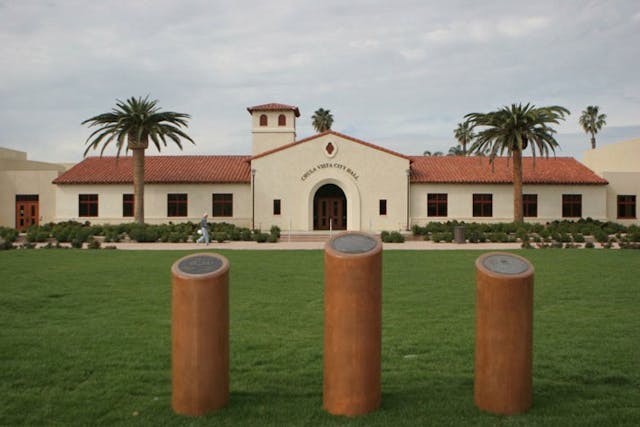The real reason Texans and tourists keep remembering The Alamo
Historical Perspective:
By Andy Porras
In March, many celebrate women on their month of recognition.
During the same month, Texas also celebrates the anniversary of toppling its former Mexican landlords. Few, however, ever put the two dates together. Historically speaking, the so-called Texas independence was, as Dr. Fred McGhee, maritime archaeologist and historical anthropologist tells it, “A myth with many secrets and misunderstandings about a so-called Texas Revolution; one of the more underappreciated aspects being the conflict that was largely a race war, with Anglo Texans secure in their self-perception of cultural and intellectual superiority vis-à-vis Tejanos, Indians and Blacks.”
To add insult to injury, the Anglos handily summed up their prevailing attitude when they opined that Mexicans were “a semi civilized set, unfit to be free and incapable of self-government.”
It was during this time that the battle of The Alamo took place. Then, almost as as quickly as it happened, the site dropped out of sight and memory from most.
In fact, the now world famous mission chapel visited by millions, almost didn’t survive to see itself as one of America’s favorite attractions of yesteryear. I’m willing to bet that not even the proudest Texan is aware of the story behind the Alamo’s survival political battle.
If it hadn’t been for one quite remarkable Hispanic/Irish woman, Texans would be a-hooping and a-hollering around a metal flagpole, or at best, one of those ugly and often misleading, historical markers around this time of the year. Yep, that most precious historic structure might have been replaced by that all-American space known as a paved parking lot!
Welcome Miss Emilia Adina De Zavala, whose grandfather, was none other than the Texas’ Republic’s first Vice-President. Sr. Lorenzo de Zavala (1788-1836). More than likely, Miss Adina got her gumption from, Grandpa de Zavala who was a strong voice for democracy in Mexico both before and after his motherland’s freedom from Spain.
Ms De Zavala, teacher, historian and preservationist was born in Harris County, Texas, on November 28, 1861. She was the daughter of Augustine and Julia Tyrrell De Zavala. Miss De Zavala spent her early years in Galveston, before moving with her family to a ranch near San Antonio around 1873, researchers tell us.
After the battle at the Alamo, almost nobody gave the site nor its buildings a second thought, or look, for that matter. And that’s when another clash ensued.
According to “The Handbook of Texas Online,” Miss De Zavala, by now a semi-well known lady around San Antonio, organized a group of women who, like her, discussed and studied early Texas heroes. These ladies would become part of the Daughters of the Republic of Texas (DRT) in 1893. It was Miss De Zavala and her group who actually prevented the destruction of the Alamo chapel, after it had been purchased from the state by a wholesale grocery firm, Hugo and Schmeltzer Company. But before the ink had dried on the historic document, Miss De Zavala obtained a verbal promise from the company that her chapter of the DRT would be given the first chance to purchase the entire Alamo property.
Here again we need to remember that the Alamo did not look the way it does today. Most of the identifying part of the chapel, the step-and-arch profile that’s known the world over, was built by the U.S. Corps of Engineers in the 1840s.
When the Texas joined the United States, the chapel and the rest of the Alamo’s walls were in shambles. By the time the Corps arrived, they were in need of warehouse space to store grain and supplies. Thus, Uncle Sam turned the Alamo into a storage area and had the walls rebuilt then they re-roofed it. So what people see today isn’t what was there in 1836, the year the Alamo fell.
Miss De Zavala attracted the attention of wealthy Texan, Clara Driscoll, who joined the DRT and De Zavala’s group of preservationists. Ms Driscoll, who had inherited an untold amount of real-estate money, soon purchased the property from the grocery firm to prevent it from falling into the hands of another group, an “eastern syndicate.” Finally in 1905, the Texas legislature authorized the state to purchase the property from Driscoll and custody was turned over to the DRT.
Two ladies, one a well traveled and well-to-do, the other a well educated and a proud decedent of an early Texas hero had different philosophies and personalities, soon clashed. Once again, the Alamo served as background for a conflict.
Ms. Driscoll insisted that part of the old Hugo and Schmeltzer building, had been built long after the famous battle in 1836, therefore it needed to be taken down. Miss De Zavala opposed her friend’s action, as her research indicated that the building was part of a structure known as the “long barracks” which would be of great historical value in the future.
Researchers discovered, much after all this took place, that Miss De Zavala’s determination paid off as that section of the Alamo grounds is where much of the fighting took place in the legendary battle, not in front of the chapel.
This facade is part of the romanticized and Hollywoodized versions that groups like the Texas State Textbook Committee love to fling at Texas children to perpetuate the distorted version of Texas History.
The Driscoll group, however did win several decisions in state court against Miss De Zavala, but it still didn’t deter this granddaughter of a patriot from fighting for what she believed to be right.
In 1908, Miss De Zavala barricaded herself inside the Alamo’s north barrack for three days to protest its demolition. In an article about her, the writer points out that she believed that the section she protected from its demise was of more historical value than the chapel – the site that tourists take pictures of daily to tell their friends that they’ve been to the Alamo.
Our bicultural heroine did whatever she thought was necessary to safeguard her beloved piece of Texas History. She even took residence next door! Well, almost next door.
Records show that Miss De Zavala lived at the Menger Hotel from 1926 to 1932. If you’ve ever visited the Alamo Plaza in downtown San Antonio, you may have noticed the proximity of both structures.
So when they toast Texas’ independence, its battles and its historic landmarks, I hope they remember to say !Gracias! to Miss Adina de Zavala for remembering (and preserving) the Alamo.



 Arturo Castañares
Arturo Castañares


